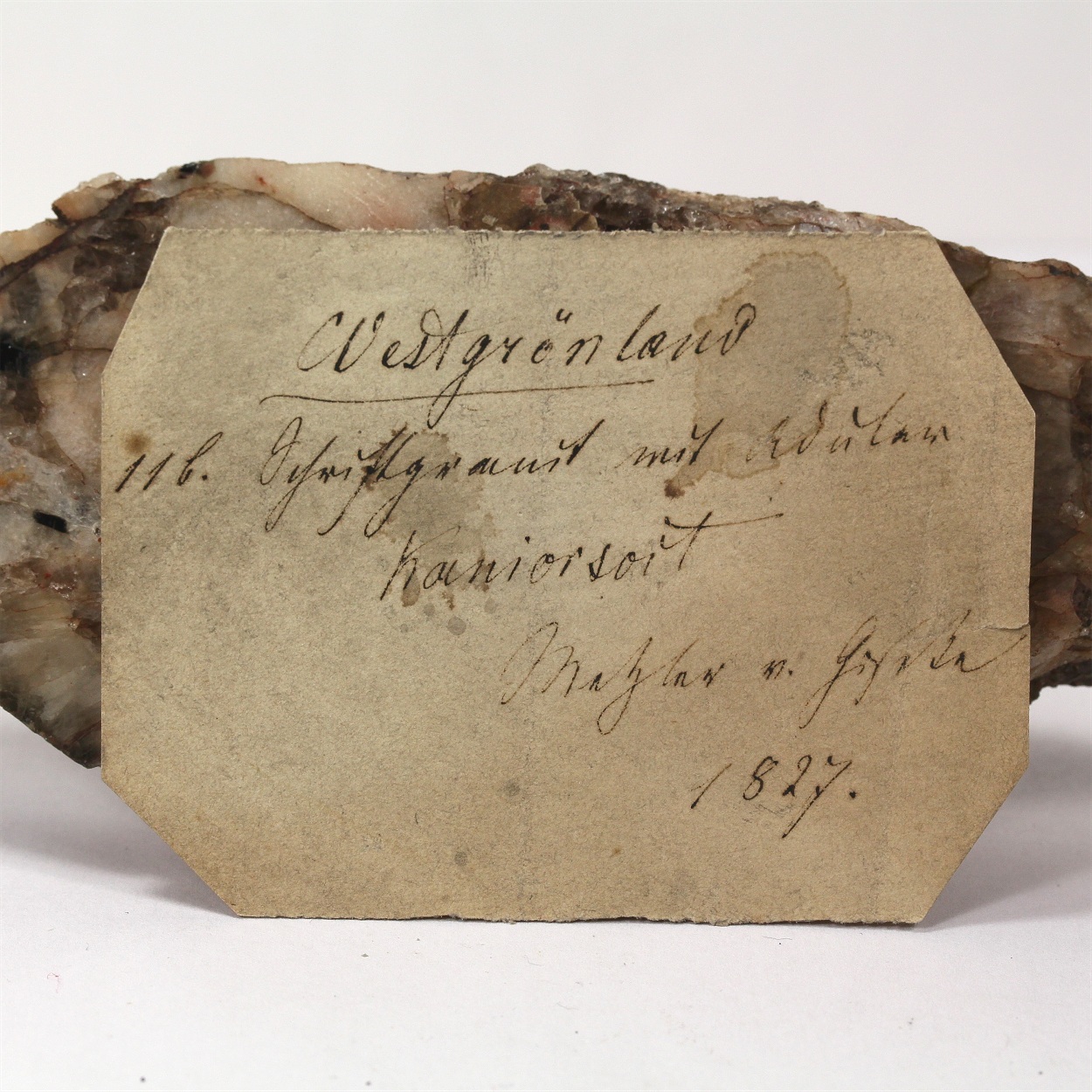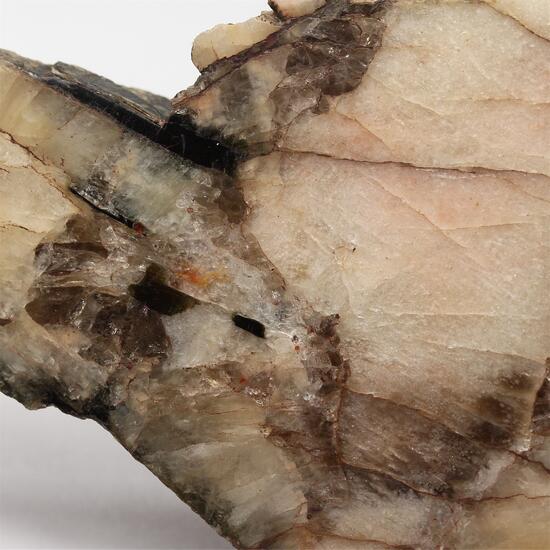Polished slab of coarsely crystalline orthoclase feldspar. The crystals show a "moonstone"-like, blueish-white opalescence when viewed from the right angle.
First recorded in 1827, this specimen comes with a bundle of old labels. The 1827 label means: "Westgrönland - Schriftgranit mit Adular - Kaniorsort - Metzler v. Giseke 1827" (Western Greenland - graphic granite - Kaniorsort - Metzler von Gieseke 1827). The specimen was found during the expedition in the years 1806-1813 - the corresponding story is really amazing:
[cit. Wikipedia:] Carl Ludwig Giesecke (born 6 April 1761 in Augsburg, Germany, deceased 5 March 1833 in Dublin, Ireland) was a German actor, librettist, polar explorer and mineralogist. In his youth he was called Johann Georg Metzler; in his later career in Ireland he was Sir Charles Lewis Giesecke.
In 1800, Giesecke abandoned the theater and switched to mineralogy and mineral trading. In 1801, he studied for some time with Abraham Gottlob Werner at the Bergakademie in Freiberg. Later, under the title of Royal Prussian Mine Counsellor (Königlicher Preussischer Bergrat), he conducted surveys in Sweden 1803 until 1804 and in Norway in 1805. Eventually he settled in Copenhagen, where he worked as a mineral dealer, collector, and tutor.
He obtained approval from the Danish King Christian VII to explore the geology of the Faroe Islands, which he visited in 1805, and Greenland; the latter journey began in 1806. Giesecke established friendly relations with the Eskimo inhabitants and learned to travel in the umiak, the vessel used by the Eskimo women. He explored much of the coastline in this way. According to Mirsky, Giesecke "was frugal and spent his time 'hewing and cleaving stones from morning to nightfall.'"
Scientifically, the journey was a success; his investigations laid the foundation for Greenlandic mineralogy. However, it met with many difficulties, including the harsh Greenland winters and illness. Many of Giesecke's troubles resulted from the Napoleonic wars, which reached their climax during his stay. Back home in Copenhagen, Giesecke's existing collections were destroyed when the British fleet bombarded the city. In 1806, Giesecke shipped a large collection of materials aboard the Danish ship Freuhlin, headed for Copenhagen. The ship was taken as a prize of war by the Royal Navy, and the collection auctioned off in Edinburgh in 1808.
Another consequence of the war was that Giesecke's stay in Greenland, originally planned for only two years, was extended to seven: the British had captured the Danish fleet and Giesecke was unable to get home. His eventual return to Europe in August 1813 was picturesque; according to Dent "he landed at Hull, looking probably rather like Papageno, for his European clothes had worn out, and he was dressed as an Eskimo in fur and feathers."
The loss of the 1806 shipment was perhaps a blessing in disguise since it ultimately enhanced Giesecke's reputation in Britain. The collection was examined by the mineralogist Robert Jameson, who, unaware of its provenance, concluded it was worthless. Ninian Imrie and Thomas Allan suspected that a white mineral in the collection was the rare cryolite and bought the lot. However, it was only when Morten Wormskjold was detained in Edinburgh on his way to Greenland in 1812 that he could identify the collector as Giesecke and the provenance as Greenland. Another mineral in the collection was later named allanite after Thomas Allan. Thus the value of the collection was ultimately recognized prior to Giesecke's return to Europe.
Thus, it is a very important and rare historic specimen and document, having truly a pedigree.





























